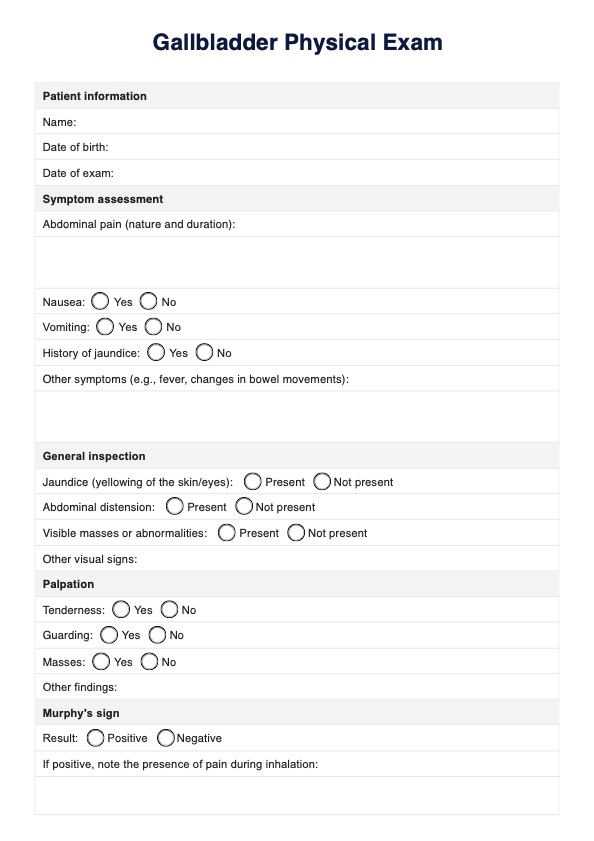A physical exam of the gallbladder involves a healthcare professional assessing the abdomen, specifically the right upper quadrant, through palpation and observation to identify signs of tenderness, inflammation, or abnormalities associated with gallbladder issues.

Gallbladder Physical Exam
Learn about the physical exam for the gallbladder, including techniques and examples. Download Carepatron's free gallbladder physical exam PDF guide for reference.
Gallbladder Physical Exam Template
Commonly asked questions
Collin's sign is a clinical finding observed during a physical exam of the gallbladder. It refers to tenderness in the right subcostal area upon inspiration, often indicative of gallbladder inflammation or cholecystitis.
Murphy's sign on a sonograph involves observing for a pause in inspiration due to pain when the ultrasound transducer is pressed over the gallbladder area. This can indicate gallbladder inflammation or obstruction, providing valuable diagnostic information.
EHR and practice management software
Get started for free
*No credit card required
Free
$0/usd
Unlimited clients
Telehealth
1GB of storage
Client portal text
Automated billing and online payments











